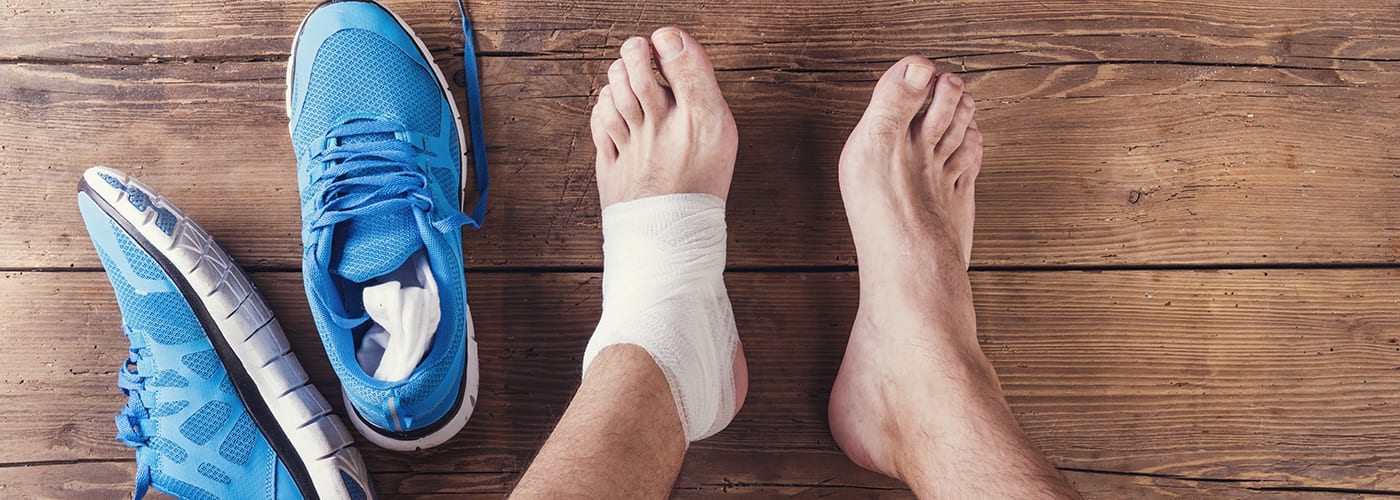Walking and running can be a great way to get active! Apart from being an incredibly accessible form of cardio, it’s a great way to get your lungs working, and your heart pumping, and get your whole body involved. While running and walking can be low-impact (and no contact) activities, they aren’t void of all injuries. At HiDow International, we’re committed to helping you relieve pain and get active sooner! Today, we’re taking a look at how you can avoid walking and running injuries.
Risk Factors for Injuries
There are a wide variety of injuries that can occur while walking or running. Many of these types of injuries have to do with your lower body and primarily your legs, groin, glutes, and every muscle and ligament in between. Common injuries of this sort include sprained ankles, shin splints, runner’s knee, IT Band Syndrome (ITBS), hamstring strains, and plantar fasciitis. Luckily, each and every one of these injuries has a solution and is easily preventable.
Walking and running injuries are most common as you get older. That being said, they can also come quite easily to those who do not stretch, wear the proper footwear, or go too hard based on their ability and physical condition. Those who don’t stretch properly or those who have a high BMI (not the best measurement but that’s for another day) are also more at risk to experience walking and running injuries.
So what can you do to avoid walking and running injuries? Well…
1. Run Shorter Distances
First, decrease how much you are running. You can avoid an injury by not pushing yourself to the point that you pull a muscle or hurt your knees. If you are just beginning try walking a mile, then two, then jog that distance and increase from there. Even if you are an experienced runner, if you begin to feel pain from running or walking, it’s okay to cut back on the distance that you cover. Remember that resting and allowing yourself to recover are important parts of any workout routine.
2. Don’t Just Walk and Run
If you begin to feel your joints hurting, and your muscles burning (from pain, not soreness), you should try other forms of cardio. Swimming, Cycling, and ellipticals are low-impact ways to get your cardio in without giving your joints a beating. The most common sports-related injuries are those that impact the joints and ligaments in your knees, so it is important to take switch up your cardio workouts as needed.
3. Apply Ice or Heat (Or Tens)
If you begin to feel pain from walking and running, you can give yourself ice, heat, and electrotherapy treatments in order to help you manage the pain. Generally, ice packs, peas, and ice baths are great for treating inflammation while heat is better for treating chronic pain. For an easy and convenient way to treat both, HiDow offers the most portable and easy-to-use TENS therapy units on the market. Perfect for helping you relieve pain in the short term and long term.

Related Stories
Pickleball vs. Tennis: The Science of Recovery
For years, tennis was the stand-in for movement: endurance, coordination, and power all at once....
Oct
5 Ways to Support Bone Strength with HiDow
World Osteoporosis Day (October 20) October 20 is World Osteoporosis Day, and chances are, you’ve...
Oct
FDA-Cleared Is a Flex. Here’s Why.
Pulling Back the Curtain You’ve seen it on boxes, on websites, in ads: FDA-cleared. It...
Sep
This Is Fibro. This Is Larry.
September is Pain Awareness Month. And we’re not here to give you medical definitions or...
Sep
Train Your Relaxation Reflex
How often do you find yourself struggling to switch off after a long day? With...
Aug
Back To School Fitness: Balancing Academics & Athletics
Most student athletes don’t have a motivation problem. They show up. They train hard. They...
Aug